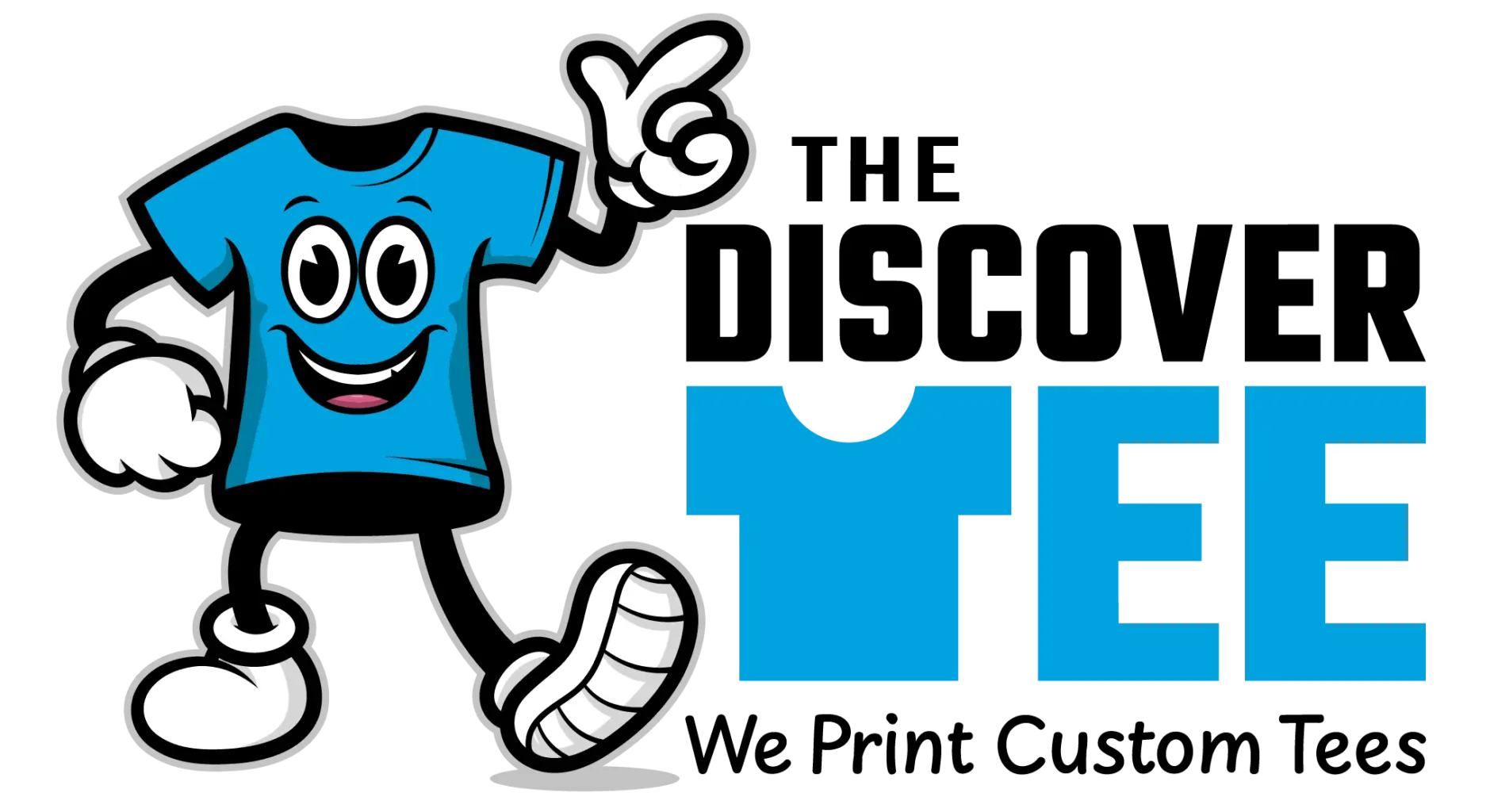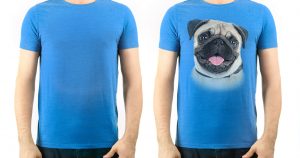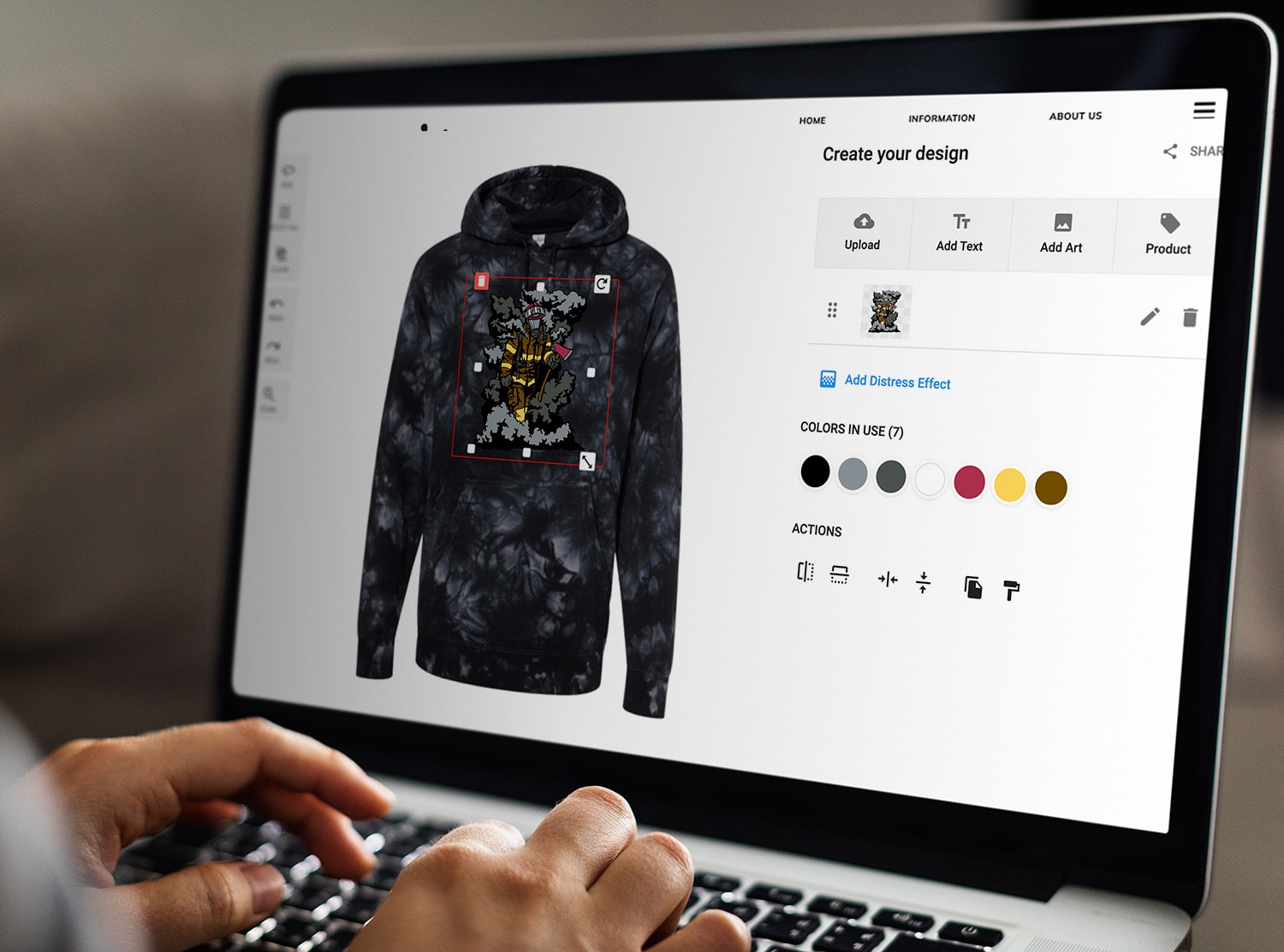Screen printing is also known as silk screening. This is a technique where a mesh transfers ink onto a substrate (cloth or fabric) except in the areas that are covered by a stencil. The main process here involves a fine mesh or screen that is stretched tightly around a frame. The exceptional areas are masked out of the screen, to create the print the frame is positioned over the items to be printed. Traditionally the process was called screen printing or silk screening since silk was used in the process. It is also known as serigraphy or serigraph printing.
Why is screen printing used?
First and foremost, the technique is easy. Anyone can easily understand the process in a few minutes. There’s nothing much to it. The ink is applied to the screen and then stamped to the garment several times. All that the workers need to do is to make sure that the design is centered and the ink is enough. Many garments can be created using this method per hour. As you might expect, the more practice the workers acquire, the more efficient he will become.
It creates a unique and authentic output- silk screening creates a unique output. The ink is absorbed deeper thus providing a clearer image. The ink can be applied to be thick thus lasting for a long time, being brighter even on vibrant colors. It is best for garments that require designs that have a high level of vibrancy.
Cost-efficient and yields large volume- screen printing is cheap than digital printing. It can create large quantities of design at a faster turnaround.
Versatility- It accommodates a large range of materials vinyl, fabric, metal, glass, foam, rigid plastic, and many others.
A guide for screen printing equipment
Screen printing begins by gathering materials that are necessary and preparing the work-space thoroughly. The materials that are needed are dependent on the type of screen printing
Stencil- it has a frame in which a mesh is attached. It is coated with a light-sensitive material. It is also known as the screen. Traditionally the mesh was made from a silk thread and nowadays polyester fabrics are used. There are two fundamental sorts of screens that are utilized for screen printing, transient and changeless. Transient Screens keep going for a shorter time frame. They are appropriate for enlisting single or constrained prints on garments and papers. They are extremely simple to get ready and don’t require a great deal of cash or exertion. Instances of fleeting screens are paper stencil screens and flame wax screens. Changeless Screens have an extremely prolonged period range and if appropriately thought about, can keep going forever. They can be utilized in printing products, hundreds and even a large number of prints. Their readiness in examination with the fleeting screens requests significant exertion and cash. Instances of changeless screens incorporate photographic screens, polish screens, and shellac screens.
Squeegee- this is a rubber sometimes a polyurethane held in a handle. It is used for pulling the ink through the screen and the surface to be printed. It should be small enough to fit in the frame of the screen and large enough to spread to ink on the entire screen surface with just one pass.
Scoop coater- it is a handheld tray that contains a reservoir for the photo emulsion and a lip that allows you to apply the emulsion layer in an even coat.
Light source- this burns the emulsion to the screen. Some professional screen printers contain fluorescent, quartz, black-light tube, and metal halide. A light source is not needed for hand tracing.
Washing area- this is used to wash away the emulsion that was not burned to the screen. It should have a hose that can be easily aimed at the screen.
Ink- screen printers use acrylic ink to print on paper. Textile ink is for fabric printing.
Material- these are items that the print is being put on. Anything that can retain an ink can be used as a material. Commonly used materials are fabric, wood or paper.
Screen printing process step by step
There are different screen printing method that is by the use of light reactive emulsion, using screen and squeegee and use of embroidery hoop. Here are the steps of using a light reactive emulsion method in screen printing.
Step one: Create your print
You can think of something interesting and draw it on a paper or you can have a design of the company that is needed. Keep the design simple at first without a lot of thin lines. You need a black image to block the light. Once you are done settling the image you can print it in a laser printer on to a transparent paper.
Step two: Coat screen
the mesh screen is coated with a photosensitive emulsion. This must be done in an area that is not lit and the screen must be kept out of light while drying.
Step three: Burn screen
take the transparency and place it outside the screen. The screen is placed in an exposure unit or direct light to expose the emulsion. The emulsion will be hardened and the screen covered by the design remains wet. If the output of the design needed has many colors then, the separate screen must be used in each layer of ink.
Step four: Rinse out image
After the emulsion has been exposed, take out the transparency to the washout sink. Gently rinse the entire screen. Here the emulsion where the picture was will be cleaned out including whatever other emulsion that could keep running into the picture. Put the screen aside to dry subsequent to flushing.
Step five: Prepare the item for print
The item being printed is laid on the printing board, below the screen that is placed on the printing press. Take the desired ink and spread across the screen below the image and a squeegee is used in pulling the ink through the screen. The best technique for pulling the screen is straight up and down angle. If multiple items are being printed then the screen is raised and a new item or garment is placed in the printing board. After all the item have been printed the emulsion is removed so that the mesh will be reused again.
Step six: Cure ink
depending on the ink used curing processes differ. The printed item is passed in a dryer and be careful while removing it from the platen as the ink is still wet. It is then set to dry and the final product is thoroughly cleaned to remove the residue and passed to the owner.
Will screen printing ink washout?
A material that has been properly screen printed, the design will not wash out. The drying time and temperature depends on the ink used and fabric. Instructions need to be followed if you want to produce a long-lasting washable item.
What the difference between screen printing and digital printing?
Screen printing is faster and cheap compared to digital printing. Screen printing involves creating a screen and using it to apply layers of ink to other printing surfaces. Printing with the screen is widely used by t-shirt printing companies and the process is of high quality. Digital printing is also faster but the cost is higher due to the equipment that is used. Screen printing is more convenient where the designs are complex. When many colors are needed the more the price increases.
At the point when a screen printer costs their shirts, they generally charge more for more hues. With advanced shirts, there are boundless hues and no screens, only one level charge for each shirt. Rather than setting up every one of the screens in advance, the main set up digital requires is a pre-treatment of the shirt, which gives the shirt a strong base and keeps the carefully printed ink from spreading. This is a significantly less tedious pre-printing process.
Digital printing offers substantially more control during the printing procedure than screen printing. Digital printing gives a printer the alternative of auto-coordinating ink. Rather than blending inks, the screen printing way, ink coordinating enables the advanced printer to print any shading from the first structure straightforwardly onto the shirt. The advanced ink procedure makes it simpler to print multi-hued structures carefully on shirts.
For a huge request of shirts screen printing is as yet going to be the fundamental choice most shirt printers pick. The main drawback of advanced printing is the maker needs various printers to accelerate the printing procedure. Screen printing can print more shirts one after another, making them perfect for enormous requests. This is the primary motivation behind why computerized printing hasn’t consumed control over the market. Some time or another most shirt printers may do advanced printing if printers become enormous enough and can deal with greater requests. Up to that point, screen printing and digital printing will keep on cooperating. It will be dependent upon the printer to choose what procedure is progressively productive for every individual request.
Advanced printing, when all is said is done, it is progressively fit towards littler requests since there is no base amount – you have the choice of requesting only one custom shirt. With screen printing, in any case, requesting a solitary custom shirt is irrational. There are moderately high arrangement costs engaged with screen printing that leave just when numerous shirts are requested. Then again, the expense of computerized printed shirts doesn’t diminish particularly as the number of shirts requested increments. For instance, the expense of advanced printing will just diminish by 10 or 20 percent.
Another factor that must be mulled over is the shade of the shirt. When purchasing light shaded shirts, for example, white or normal hued shirts, both digital printing and screen printing are satisfactory for your custom shirts. When requesting darker shaded shirts, similar to blue or dark, the digital printing alternative is dispensed with. The ink utilized in advanced printing isn’t just sufficiently able to infiltrate through the darker shades of the shirt.
What is the difference between silk screen printing and heat transfer
Heat transfer is another basic printing procedure used to customize tote packs. This strategy begins by printing the work of art onto a film that is applied to the tote pack with high heat that secures the film to the sack. This strategy is utilized when the fine art has countless hues or when certain impacts are utilized that weaving and silk-screening can’t copy. These impacts incorporate slopes of shading (where one shading blurs into another), shadows and reflections. This is likewise the technique utilized when a photo should be applied. Heat transfer is not constrained to a specific number of hues, however, they are restricted to certain tote pack materials. Nylon, for instance, will liquefy when presented to the warmth. Cotton and poly-canvas (polyester) are the best materials for heat transfer since they can deal with the high heat without softening or searing. The preferences to heat transfer are the capacity to have photographic or shading extreme work of art applied to canvas packs and to reproduce fine detail all the more precisely.
History of screen printing
Screen-printing previously showed up in China during the Song Dynasty. Japan and other Asian nations embraced this technique for printing and propelled the art utilizing it related to square printing and paints.
It was then acquainted with western Europe in the late 1700s but it didn’t increase a wide acknowledgment and was very little utilized in Europe until when silk work was made accessible for exchange and a beneficial medium was found.
It was protected first by Samuel Simon in 1907 in England. Initially, it was utilized as a prevalent technique for printing costly backdrops, silk, textures and printing cloth. The screen printers built up a protective, and antisocial strategies for business that expected to stay quiet about their workshop’s systems and learning.
In mid-1910s Roy Beck, Charles Peter and Edward Owens tested and considers chromic corrosive salt sharpened emulsions for photograph receptive stencils. Numerous printer tries different things with photograph receptive synthetic substances utilized surely understood actinic light actuated cross-connecting or solidifying qualities of potassium, sodium and ammonium bichromate synthetic compounds and gluten mixes.
This trio of designers would demonstrate to change the business screen printing industry by acquainting photograph imaged stencils with the business, however, the acknowledgment of this technique would take numerous years. Business screen printing presently utilizes sensitizers far more secure and less dangerous than bichromates, right now there are huge determinations of pre-sharpened and “client blended” sharpened emulsion synthetic substances for making photograph receptive stencils.
Initially, a beneficial mechanical innovation, screen printing was in the long run received by craftsmen as an expressive and helpfully repeatable mode for duplication a long time before the 1900s. It is now prevalent both in expressive arts and in business printing, where it is usually used to print pictures on T-shirts, caps, CDs, DVDs, pottery, glass, paper, metals, and wood.
In 1930 a gathering of craftsmen who later shaped the National Serigraphic Society authored the word Serigraphy to separate the imaginative utilization of screen printing from the modern utilization of the procedure.
In 1960 a patent rotating multicolor article of clothing screen printing machine was created by an American businessperson, craftsman, and designer Michael Vasilantone. This was created to print logos and the data of the group on the articles of clothing however it was sooner coordinated to being imprinted on shirts. The patent multicolor was authorized by numerous makers. The printing of shirts made the turning piece of clothing screen printing machine prominent in the business.
These days screen imprinting on pieces of clothing covers over a portion of the screen printing movement in the United States. Realistic screen printing is broadly utilized today to make much mass or enormous group delivered designs, for example, publications or show stands. Full shading prints can be made by imprinting in CMYK (cyan, maroon, yellow and dark (‘key’)
Lastly but not least everything with advantages has a weakness, in screen printing material is the only cost. The paints and inks and unmarked garments are all you will need to produce custom shirts and pants. The only disadvantage of screen printing is that it does not perform well with multiple colors. Also, cleanup can be a chore.
Creating printing screens physically or precisely is the decision of the craftsman dependent on the assets available to him and the time s/he needs to convey. Every one of the screen development procedures and its printing system requires extraordinary tolerance and assurance to deliver precise duplication of designs. I Would recommend screen printing for new businesses that are interested in custom printing. It is easy and it can be performed by a single employee. Cost margins are slim, but with a few steady clients, most custom printers can turn a nice that profit in no time. Startup costs are small, and, as we mentioned, the raw materials and labor are the only costs.


